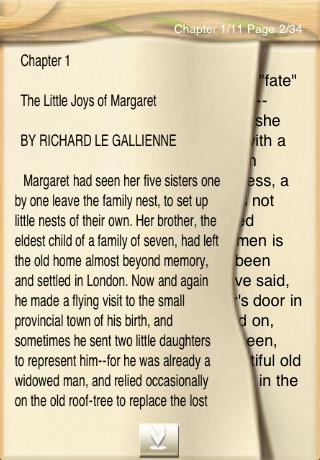
Different Girls, by Henry Mills Alden app for iPhone and iPad
Developer: DSG
First release : 16 Jul 2010
App size: 3.59 Mb
It is many years now since the American Girl began to engage the consciousness of the American novelist. Before the expansive period following the Civil War, in the later eighteen-sixties and the earlier eighteen-seventies, she had of course been his heroine, unless he went abroad for one in court circles, or back for one in the feudal ages. Until the time noted, she had been a heroine and then an American girl. After that she was an American girl, and then a heroine; and she was often studied against foreign backgrounds, in contrast with other international figures, and her value ascertained in comparison with their valuelessness, though sometimes she was portrayed in those poses
of flirtation of which she was born mistress. Even in these her superiority to all other kinds of girls was insinuated if not asserted.
The young ladies in the present collection are all American girls but one, if we are to suppose Mr. Le Galliennes winning type to be of the
same English origin as himself. We can be surer of him than of her, however; but there is no question of the native Americanness of Mrs. Alexanders girl, who is done so strikingly to the life, with courage to grapple a character and a temperament as uncommon as it is true, which we have rarely found among our fictionists. Having said this, we must hedge in favor of Miss Jordans most autochthonic Miss Kittie, so young
a girl as to be still almost a little girl, and with a head full of the ideals of little-girlhood concerning young-girlhood. The pendant to her
pretty picture is the study of elderly girlhood by Octave Thanet, or that by Miss Alice Brown, the one with its ideality, and the other with
its humor. The pathos of "The Perfect Year" is as true as either in its truth to the girlhood which "never knew an earthly close," and yet had
its fill of rapture. Julian Ralphs strong and free sketch contributes a fresh East Side flower, hollyhock-like in its gaudiness, to the garden
of American girls, Irish-American in this case, but destined to be companioned hereafter by blossoms of our Italian-American, Yiddish-American, and Russian-American civilization, as soon as our nascent novelists shall have the eye to see and the art to show them.
Meantime, here are some of our Different Girls as far as they or their photographers have got, and their acquaintance is worth having.



